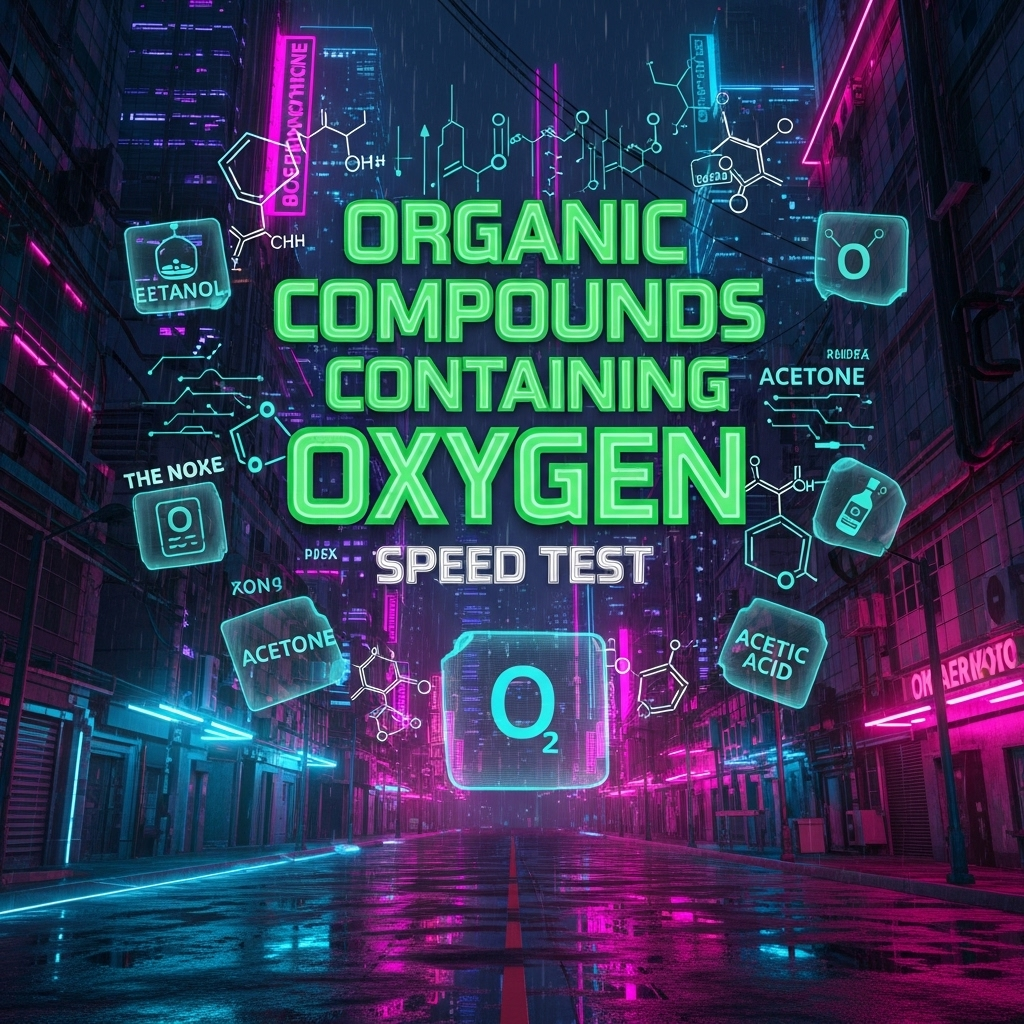Organic Compounds Containing Oxygen – Interactive Quiz & Cheatsheet
Explore alcohols, phenols, ethers, aldehydes, and ketones through an engaging quiz and notes
Updated: 3 months ago
Categories: Mini Game, Chemistry, Class 11, Organic Chemistry

Organic Compounds Containing Oxygen Cheatsheet
Cheat Codes & Shortcuts
- Definition: Organic compounds containing oxygen possess oxygen atoms in functional groups influencing their chemistry.
- Major Classes: Alcohols, Ethers, Aldehydes, Ketones, Carboxylic Acids, Esters.
- Alcohols: Contain hydroxyl group (-OH) attached to saturated carbon; general formula \( R-OH \).
- Ethers: Contain an oxygen atom bonded to two alkyl or aryl groups; general formula \( R-O-R' \).
- Aldehydes and Ketones: Contain carbonyl group (C=O); aldehydes have at least one hydrogen attached, ketones have two carbon groups.
- Carboxylic Acids: Contain carboxyl group (-COOH); acidic properties due to resonance-stabilized carboxylate anion.
- Esters: Derived from carboxylic acids with an alkoxy group replacing hydrogen; general formula \( R-COO-R' \).
- Nomenclature: Named using IUPAC rules with suffixes like -ol, -al, -one, -oic acid, and -ate.
- Reactivity: Includes oxidation, reduction, nucleophilic addition and substitution, depending on functional groups.
- Importance: Widely present in pharmaceuticals, fragrances, polymers, and biological molecules.
Quick Reference Table
| Type | General Formula | Characteristic Functional Group |
|---|---|---|
| Alcohol | \( R-OH \) | Hydroxyl group (-OH) on saturated carbon |
| Ether | \( R-O-R' \) | Oxygen connected between two carbons |
| Aldehyde | \( R-CHO \) | Carbonyl with at least one hydrogen |
| Ketone | \( R-CO-R' \) | Carbonyl between two carbons |
| Carboxylic Acid | \( R-COOH \) | Carboxyl group (-COOH) |
| Ester | \( R-COO-R' \) | Derived from carboxylic acid and alcohol |
Advice
Identify Functional Groups: Recognize oxygen-containing groups to predict properties and reactions.
Remember Naming Conventions: Use suffixes and prefixes appropriate to the functional group.
Understand Reactivity: Carbonyl groups are electrophilic; hydroxyl groups participate in hydrogen bonding.
Practice Reactions: Know oxidation, reduction, esterification, and substitution reactions relevant to these groups.
Check Structure: Use molecular formulas and structures to confirm compound class.
Organic Compounds Containing Oxygen Quick Tips
- Alcohols: Classified as primary, secondary, or tertiary depending on carbon attachment.
- Ethers: Generally less reactive; used as solvents due to relative stability.
- Aldehydes: More reactive than ketones; oxidizable to carboxylic acids.
- Ketones: Resistant to mild oxidation; key in many biochemical pathways.
- Carboxylic Acids: Exhibit acidic properties and form salts and esters.
- Esters: Often have pleasant odors; formed via esterification between acid and alcohol.
Organic Compounds Containing Oxygen Quiz
Test your knowledge with 5 questions! You have 30 seconds per question.
Question: 1/5
Time left: 30s
Quiz Complete!
Your Score: 0/5

Group Discussions
No forum posts available.


